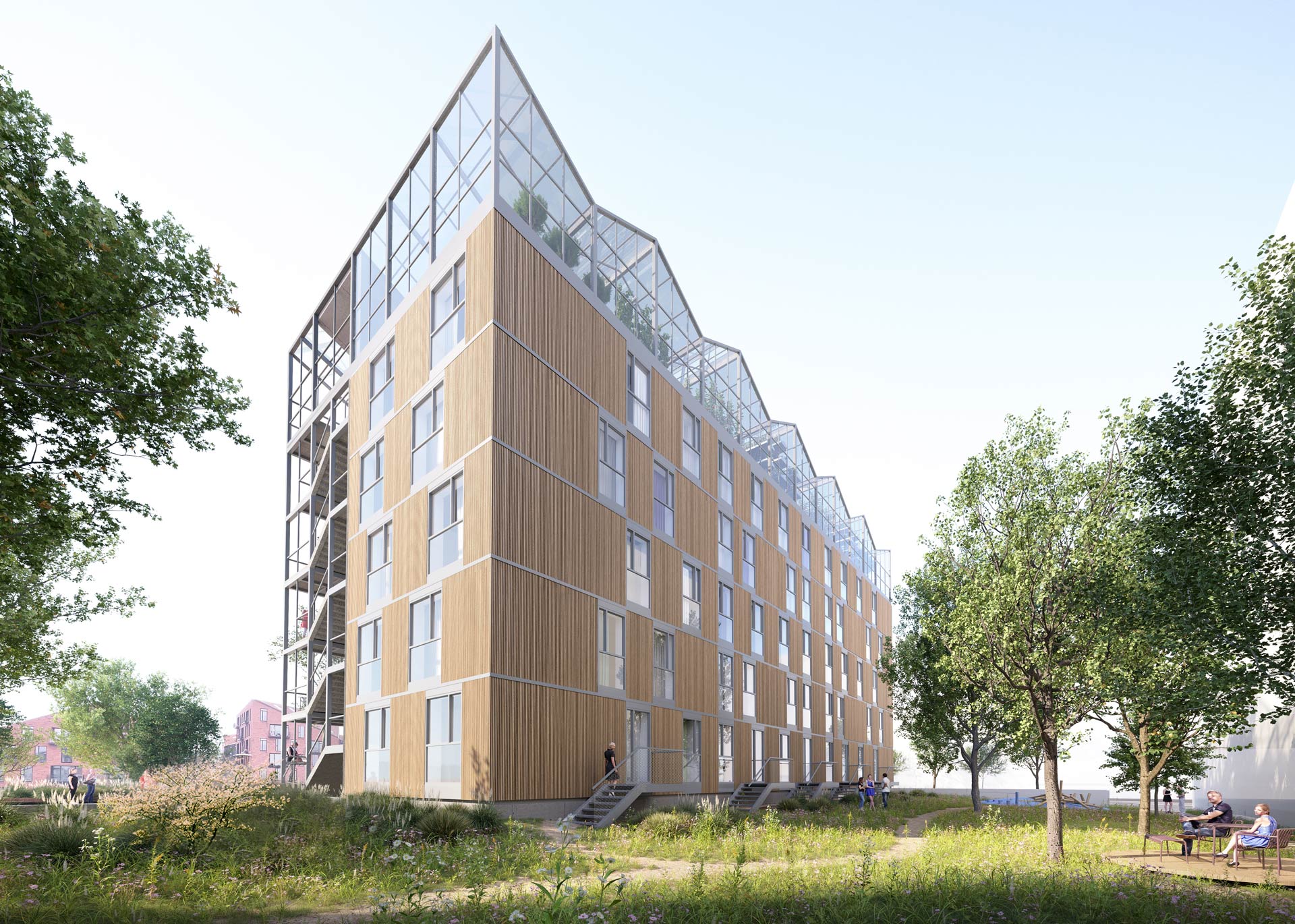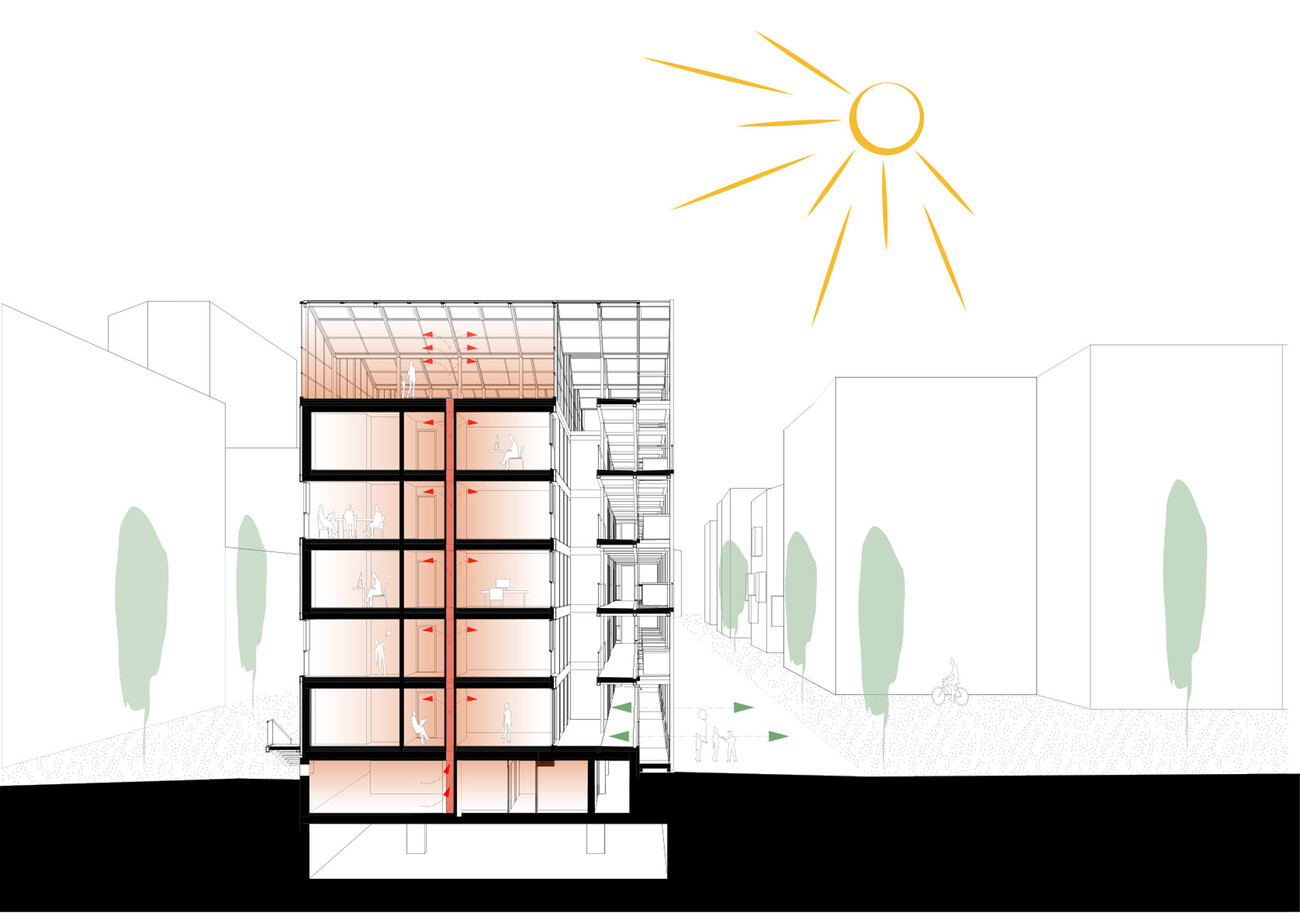Residential Greenhouse, Bremen, Germany

With the “Überseestadt” port development project, Bremen is transforming former industrial spaces into residential and commercial areas. There is a particularly special new housing project by Delugan Meissl Architects in the new Stephani quarter on the Überseeinsel: a sustainable residential greenhouse.
The building is based on a residential block made from prefabricated wooden modules. The resulting on-site assembled living units vary in size, ranging from one-bedroom apartments to family residences. Access to approximately 25 units is provided via the elevated, open, and landscaped concrete walkways. These connect shared pergolas and open spaces. On top of the five residential levels is the greenhouse, which enables local urban farming.
The design team developed a comprehensive energy concept that integrates the building’s elements. Transsolar ensured thermal comfort through simulations. The building is supplied with (sustainable) district heating via the Überseeinsel heat network, which is powered by a river water heat exchanger and heat pump, as well as photovoltaic electricity. Underfloor heating provides warmth and can also be used for temporary cooling in the future. For passive cooling, initial measures include passive ceiling fans in the living rooms. Fresh air enters each unit through exterior vents in the facade and is exhausted centrally in the bathrooms or kitchens. Large-scale natural ventilation can be manually achieved through windows.
The heat generated by the apartments is directed into the greenhouse. The greenhouse is intended for year-round planting with mechanical exhaust from the residential block routed through filters into the superimposed greenhouse. The greenhouse is kept frost-free. The building’s thermal envelope consists of double glazing on the vertical facades combined with single glazing on the roof. Convector heaters are installed on the facades to prevent interior freezing during sub-zero days. In summer, operation is optimized through high-efficiency internal shading, operable facade elements, and extensive cross-ventilation via the facade and roof. Photovoltaic panels can also be installed on the roof surfaces.


